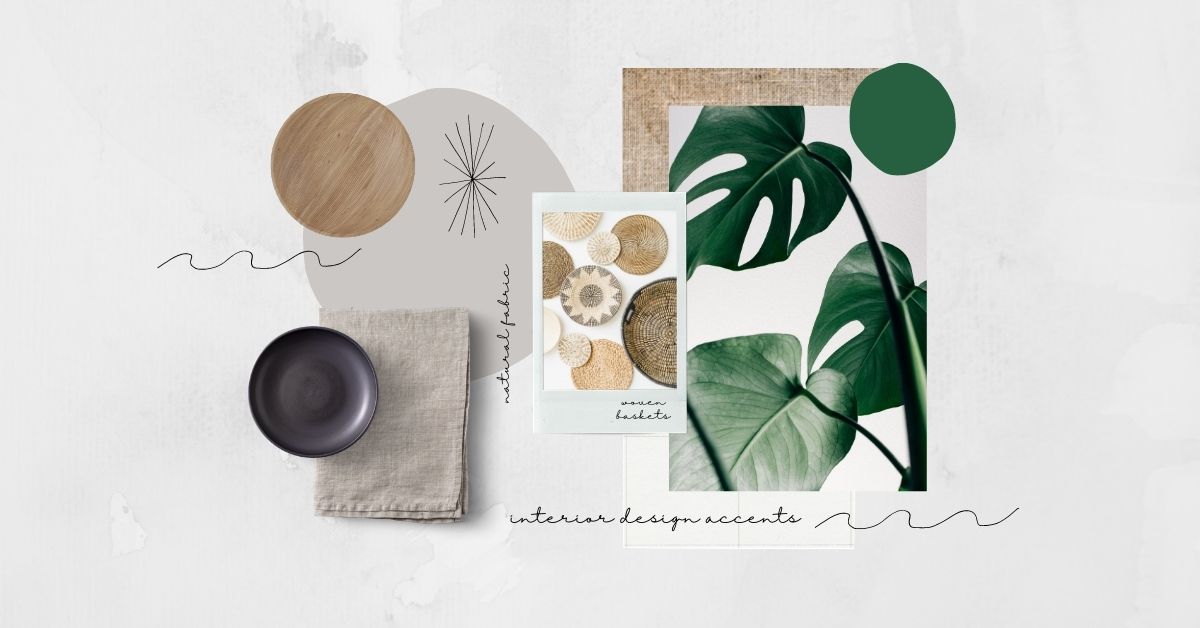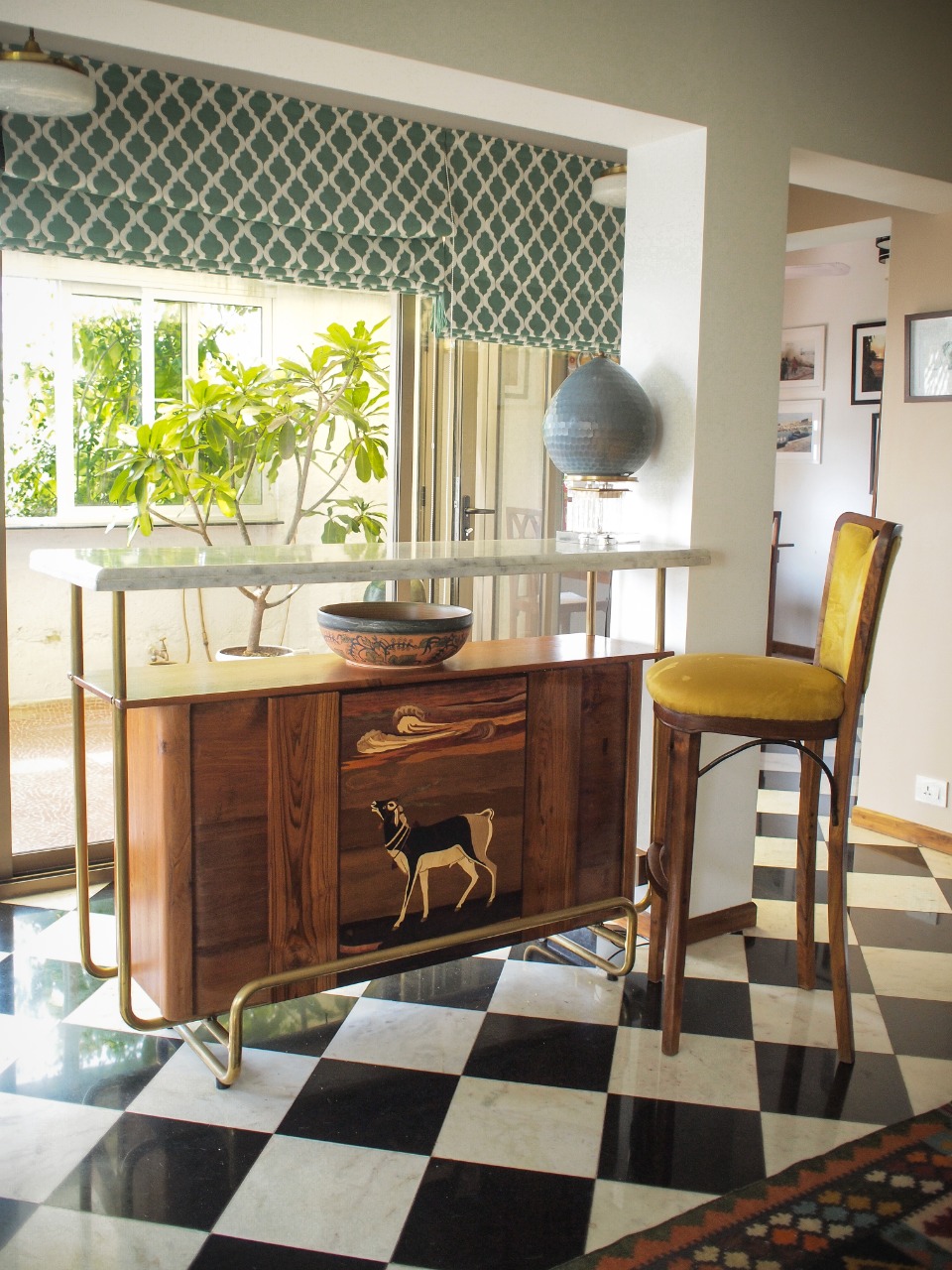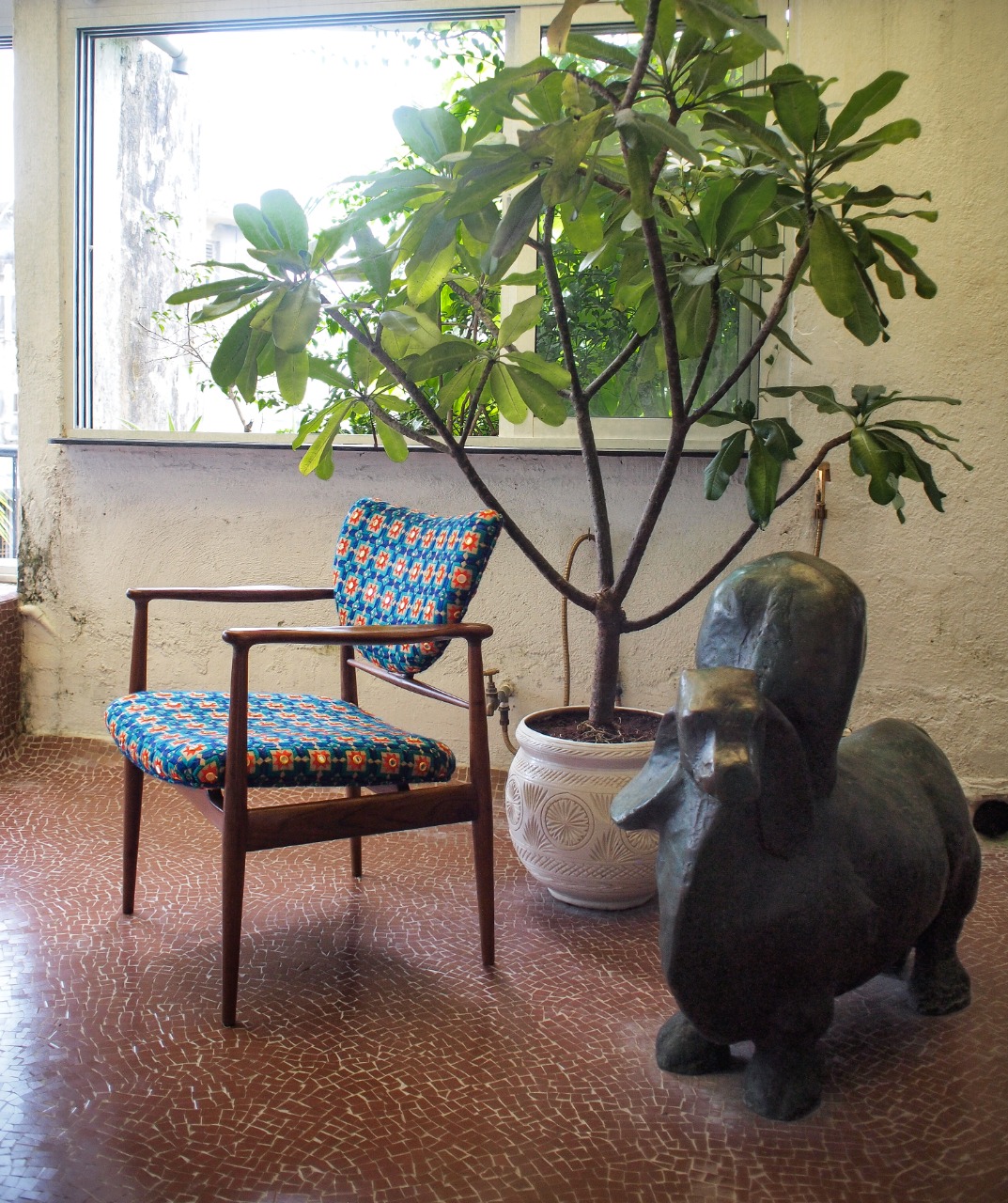
When one thinks of decor inspired by nature one is immediately brought to think of leafy visuals and floral prints foregrounded with butterflies and mist. For most such visuals the viewer’s journey ends there, and despite nature literally crawling through the print, one is left feeling nothing. If given to think about it longer, our idea of nature is fairly two dimensional especially in its representation in home decor. Our imagination could temporarily be occupied with colourful floral visuals, but there is no denying that our spaces still jarringly echo of their marble flooring and plastered walls. .jpeg)
So how does one see beyond the mango-inspired print designed to induce the romanticism of wandering through mango orchards on a summer day? To begin with, you must actually wander through a mango orchard on a summer day. Not many of us that live in urban environments have had the pleasure of picking fruit off the branch, with air scented with overripe fruit, amidst a cacophony of insects going about their business.
Also Read | Bodaq Interior Finish Collections That Look And Feel Real
Where the trees sweep low burdened by their bounty, and the scorching summer sun only manages to reach scanty patches of earth, the entire environment spills at its seams with life. Here, nature is alive in its entirety and in its smallest microcosms. It is alive beyond the visible and tangible, breathing through even its rocks and trunks that lie seemingly inert.

This is why our attempt should be to see beyond the visual, for nature exists at multidimensional and multi-sensorial levels. The idea is to be able to feel the pulse of the wood as it expands and contracts to the rhythms of the weather. To be able to sense in a pot the hours that a pair of hands have spent dancing with clay. Or to hear in the cloth, the strumming of the weaver’s fingers shuttling between threads. That must be the aspiration. That is how we can begin to bridge the divide we have created with nature that we now so desperately seek to fill.
Also Read | Casa Jardin Escandon CPDA Arquitectos
Before we celebrate life, let’s first begin to recognize it. We must experience our space as alive before we start filling it with dead objects. A fine clock, for example, carries inside it the stillness of a maker completely absorbed in the moment, while determined to have it tick to perpetuity. It’s very metal is witness to the maker's ironic attempt, which in turn brings that clock to life. The wooden table crafted by hand embodies the maker’s spirit and the wood bears testimony to life as a tree so it knows what it is to be alive. The grains record the blueprint of that life, and it is there for it to be read. No artificial laminate will ever possess that.
Also Read | Revisiting the domestic architecture of the 1950’s
This mindfulness is what we must seek in order to be close to nature. The aim is to capture sublime and elusive natural qualities such as movement, energy, imperfections, spontaneity, and generosity. Once we slow down and listen to these micro rhythms, we will find ourselves back in nature. It will no longer matter whether the print on your chair is a Mughal paisley or the asymmetrical lines of a Bauhaus pattern. 
The natural world is so heartbreakingly in balance with its elements, up until disrupted by mindlessness interventions.. It is this sense of balance that we are drawn to and must strive for in the context of decor too. When doing so, Louis Sullivan’s emphatic quote, ‘Form ever follows Function, and that is the law’ can lead your way. By definition, there is an innate functionality in everything present in nature. Even beauty, like the impassioned feathers of a wildly coloured bird, is a chance outcome of a carnal necessity. So try to put primacy on function, albeit without compromising on form.
Also Read | Scandinavian vs Minimalism : What’s different?
At Baro Design, all of our core tenets are grounded and inspired by these laws of nature. All of our designs, whether it is an entire home or a modest piece of furniture, are shredded of all that is superfluous and retain only that which is essential. We refer to this as achieving the ‘lightness of being’, and is an ethos the natural world is conversant with.
In the broader sense, the key to creating a natural and inviting space is filling it with objects, shapes, and colours that inspire you to look inwards and close in on your internal rhythm.
Also Read | Inside Chandigarh’s luxurious home by Ruby Signature
Luckily for us, good design can achieve that effect and compel you to slow down just as much as nature can.
The opinions expressed in this publication are those of the author.